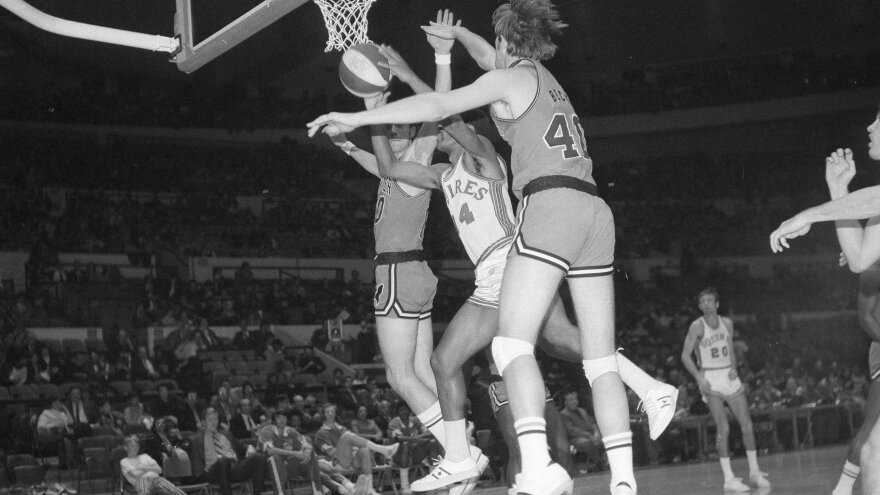Welcome to the 1970s.
America entered its second decade in the Vietnam War. The 1973 oil crisis put the US in gridlock and Nixon’s Watergate scandal rocked the country.
The Brady Bunch and MASH controlled the TV dial.
It’s also the era of glitz and glam: Wide collars and bell bottoms ruled disco nights and folks all around the country tuned in every Saturday morning for Soul Train.
In professional basketball, it’s the height of free wheelin’ and high flyin’ flamboyance.
Norfolk was no stranger to that exhilarating world. The American Basketball Association team, the Virginia Squires called the city home from 1970 to 1976.
The ABA revolutionized the sport with its first season in 1967. The league introduced a red, white and blue basketball. It featured a 30-second shot clock, last names on the back of jerseys, and the dynamic, game-altering 3-point line.
The ABA prided itself on brash and flashy play. Compared to its older, uptight brother in the NBA, the ABA emphasized creativity and a playground style of basketball.
The Doctor is in
The 1971-72 season began with insatiable excitement and huge expectations for the Virginia Squires.
The red, white and blue ballers were months removed from the top record in the Eastern Division — and with the addition of a long-legged kid from UMASS — greater aspirations for the new season permeated throughout the organization.
Julius “Dr. J” Erving brought explosive athleticism and playmaking ability all bundled in an air-defying, stylish package.
Paired with reigning Rookie of the Year Charlie Scott, the Squires had the star talent to compete for a deep playoff run.
The Glory Year
It’s September 1972. A slinky white kid from Old Dominion University arrives for his first day of the Virginia Squires’ training camp Norfolk. It’s his first day as a professional basketball player.
The 6-foot-1 guard was selected 26th overall in the NBA Draft. He forwent his chance with the Portland Trail Blazers to play for the local squad.
Financial Mismanagement
For a time, the Squires were the hottest ticket in town. Patty Van Dorn, a former Squires’ cheerleader — -a Squirette — said the early years of the team were electric for a region that desperately wanted a major sports franchise. “The area so much wanted to have a major league sporting team and the squires filled the bill. The Scope was packed-every game those first few years, those games were packed and to hear the roar of the crowd was just so exciting and thrilling.” By August 1973, however, Earl Foreman and the Squires were cash strapped. The lack of a league-wide television contract meant that most owners were usually scraping by to cash checks and pay employees. Pinned to the wall, Foreman decided to make a move that he vehemently forbade a season earlier.
Out with the old…
The new ownership brought in Jack Ankerson as general manager in May 1974. Ankerson previously helmed the role for the Kentucky Colonels and the San Antonio Spurs — where he won Executive of the Year — due to his acquisitions of Swen Nater and George Gervin. “They had someone contact me and asked if I'd be interested in talking to them,” Ankerson said. “I indicated I would be interested just to see you never want to not listen. And after a couple of days of interviews, they offered me the position and I accepted it.” Ankerson hoped his second season with Virginia would be a lot smoother after the squad finished with a league-worst 15 wins. He wanted a chance to rebuild the roster like he had with the Spurs.




